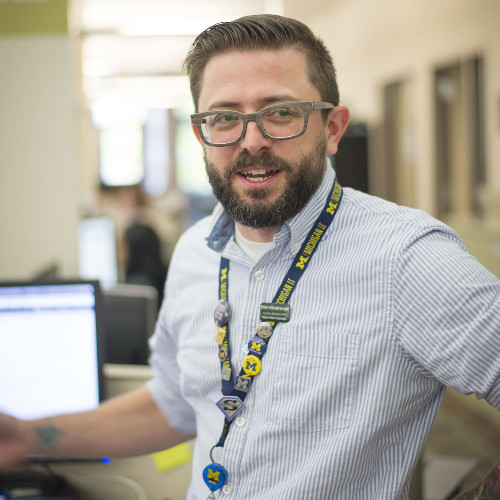Q&A: Leveraging technology to improve the customer experience

Erik Zempel, Director of Performance and Improvement Management at University of Michigan — Michigan Medicine
During a panel discussion titled Delivering a Patient Experience Across the Continuum of Care, held at the ServiceNow Knowledge 19 Conference in Las Vegas, Barbara Rotondo, a Senior Manager in Solutions Consulting at ServiceNow, sat down with Erik Zempel, Director of Performance and Improvement Management at University of Michigan — Michigan Medicine; Michael Warden, Senior Director of Service Management at Michigan Medicine HITS; Jeff Volkheimer, Director of Collaboration and Workforce Services at Duke University Health System; and Nathalie Collins, Academic Director of National Programs at Edith Cowan University in Western Australia, to gather insights on the connection between technology and the customer experience.
Rotondo: What does customer experience mean to you, and why is it important?
Zempel: We consider anyone who needs to consume our services or who benefits from our services to be a customer. That could be our clinical staff, researchers, faculty, visitors, or patients. And we defined early on that the customer experience should be simple, correct, and direct, and be delivered with empathy, effciency, and pride. What really separates us as a medical center is focusing on empathy. We try to stay cognizant of what our customers are going through, whether it’s a clinician working a tight schedule, a patient from a small town who is coming in and interacting with a massive health system, or a student trying to navigate a stressful test. We must put ourselves in their shoes and focus on empathy.
Rotondo: How does your organization measure customer experience?
Warden: We look at customer experience on an individual transaction level. If the cumulative sum of all those interactions with an organization is important to customer experience, then those individual interactions are just as important as well. We provide satisfaction surveys after every ticket result, which a lot of organizations do, but we take it to a different level by having follow-up procedures in place. So, if a customer tells us he or she is extremely dissatisfied, we have a service recovery process where a manager takes action to repair the relationship.
Rotondo: What are the key factors that influence customer satisfaction, and how are those factors influenced by technology?
Volkheimer: One of the mistakes we make in IT is we think that technology is the center of everything. It’s the center of what our staff does on a day-to-day basis, but when it comes to patient satisfaction, technology is something that should generally happen in the background. It can often be the small things that you do as an organization that can make a patient experience exceptional. So, some of the key differentiators are going to be things that make it really easy for patients to see their care provider or things that reduce their anxiety. So, small things like ‘where do I park?’ Imagine what it’s like to be a patient who’s worried about a cancer treatment who then must struggle to find somewhere to park.
Rotondo: Sometimes organizations focus too much on the technology, and not on the humans using it. How would you remedy this in the healthcare environment?
Volkheimer: We focus on embedding our IT staff within the clinical care units. The clinical staff can see exactly what it’s like to code, and the IT staff can see the role that technology plays in saving that person’s life. The staff members can really see the connection between the work that they do on a day-to-day basis and the saving of someone’s life, or the amazing research that’s going to be done that affects generations to come. We are also trying to cross-pollinate by bring more care providers into IT.
"We defined early on that the customer experience should be simple, correct, and direct, and be delivered with empathy, efficiency, and pride."
Erik Zempel, Director of Performance and Improvement Management at University of Michigan — Michigan Medicine
Rotondo: How does invisible technology influence the success of the visible solutions?
Zempel: If the invisible technologies don’t work properly, everything else starts to fall apart. But at the end of the day, customers don’t generally care about any of that. They may care about the wayfinding app that gets them to their destination, but they don’t care about the network. They don’t care about the storage; they don’t care how many CPU users are running in the virtual machine. It doesn’t matter. That’s all under the covers.
All that complexity just needs to work. It’s our role to streamline complexity, and at the end of the day it just needs to work.
Rotondo: How does an organization’s stakeholders’ view of technology help them to serve patients?
Collins: I often ask, ‘If Disney ran a hospital, what would it look like?’ And, obviously there’s a lot of go-to jokes there about the systems being run by mice and so on. But Disney does not look at technology as a cost. It looks at technology as an investment because it sees the ROI. So, technology is not actually a cost center — it’s a mobilizer. And I think one of the issues that we have in healthcare is that technology is seen as a cost because a lot of times the businesses that are running it don’t truly understand it. And so, it’s important to make that cultural shift and see technology in a new light.




































